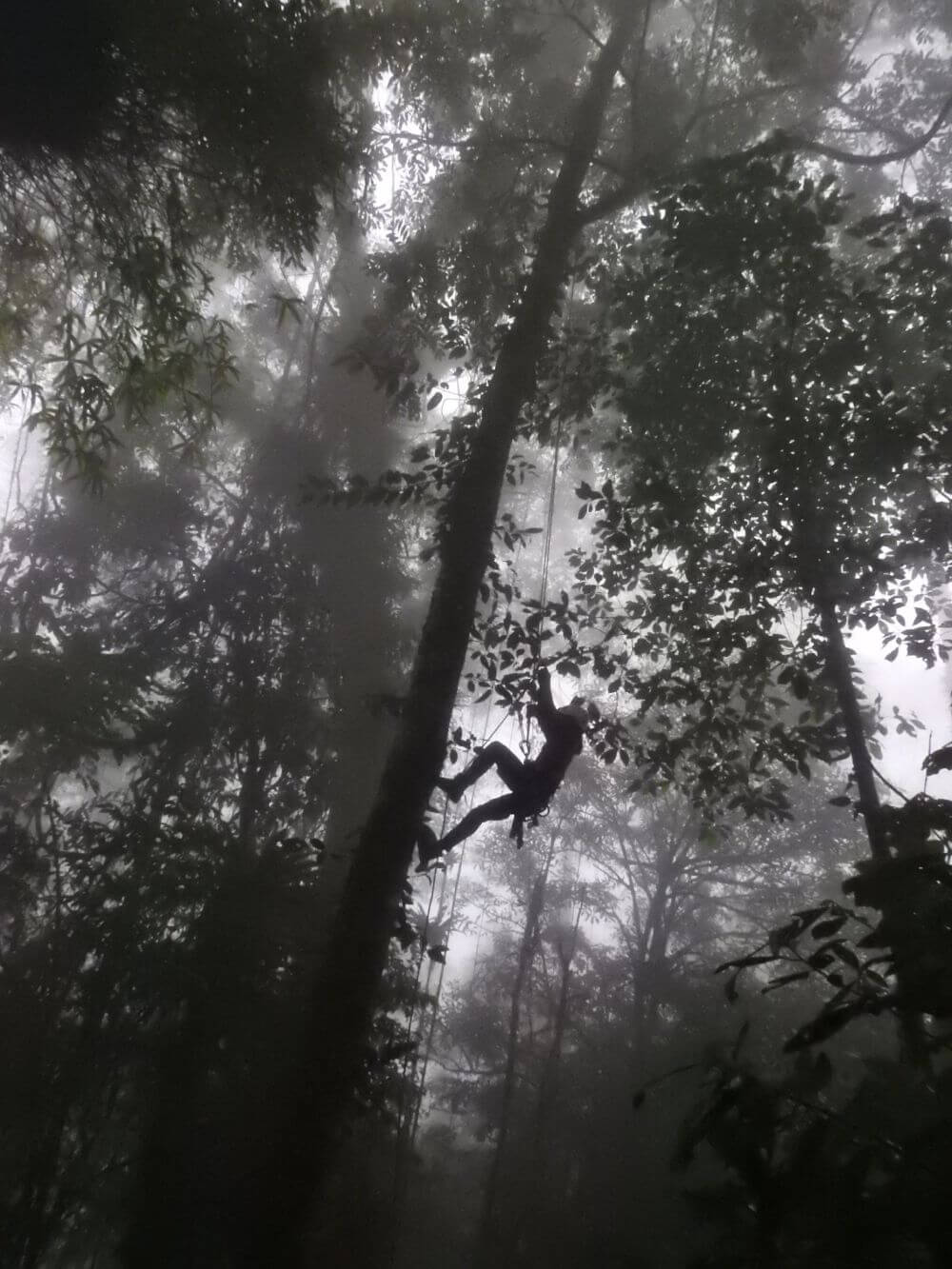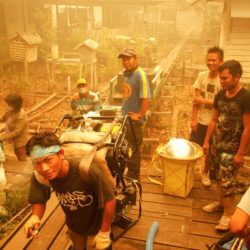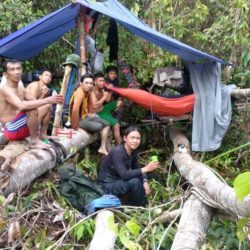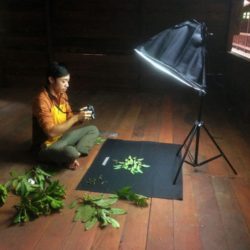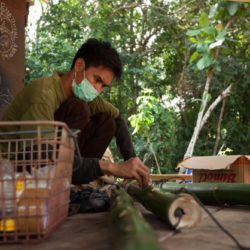Orangutans sometimes need to be ‘rescued’ from plantations, villages, farms and orchards, degraded forests, and other situations where their safety and well-being are at risk. Such ‘evacuations’ are usually a last resort and carried out by trained teams who bring with them many crucial skills, including strength, agility and a keen understanding of animal behaviour and pharmacological effects. Rescues are heavily regulated by official guidelines and protocols, but they don’t always unfold as they should in theory. For example, orangutans’ reactions to being darted with a tranquilizer can be unpredictable. Most stay awake for a few minutes after being shot, but a few will fall almost instantly, right after the sharp needle of the dart goes through a patch of delicate skin. In these cases, the darted orangutans might hit branches and/or land on the ground and be injured. In other cases, orangutans might stay awake for a long time after being shot, and sometimes get stuck or doze off on tree branches. When this happens, rescue teams need to conduct an arboreal rescue, scaling the tree to retrieve the unconscious ape. Conservation staff also put their climbing skills to good use in other ways, such as by installing camera traps in trees to monitor wildlife, as shown in this photo.
